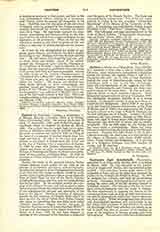

Castracane degli Antelminelli, FRANCESCO, naturalist, b. at Fano, Italy, July 19, 1817; d. at Rome March 27, 1899. He was educated at the Jesuits’ school at Reggio nell’ Emilia, and was ordained priest in 1840. Four years later he was made canon of the cathedral at Fano, and at the same time resumed his studies at the Collegio dei Nobili in Rome. In 1852 he resigned his canonry, and took up his residence at Rome. Castracane had a great love of nature, and during the latter half of his life devoted himself to biological research. He was one of the first to introduce microphotography into the study of biology. His first experiments in applying the camera to the microscope were made as early as 1862 with diatomacece, and he subsequently made these microorganisms his chief study. While investigating their structure and physiological functions and, particularly in his last years, their processes of reproduction, he valued the knowledge which they afforded, not merely as an end in itself, but also on account of its bearing on some of the problems of biology, geology, and even hydrography. The extensive collections of diatomaceae obtained by the Challenger Expedition were entrusted to him for description and classification. He discovered among them three new genera, two hundred and twenty-five new species, and some thirty new varieties. Castracane was a devout priest as well as an enthusiastic investigator. He shrank from preferment and led a simple, regular life. He continued his work to the end, saying Mass even on the day of his death. He was the author of a large number of papers, published chiefly in the proceedings of the Accademia dei Nuovi Lincei, over whose meetings he presided for many years.
HENRY M. BROCK

